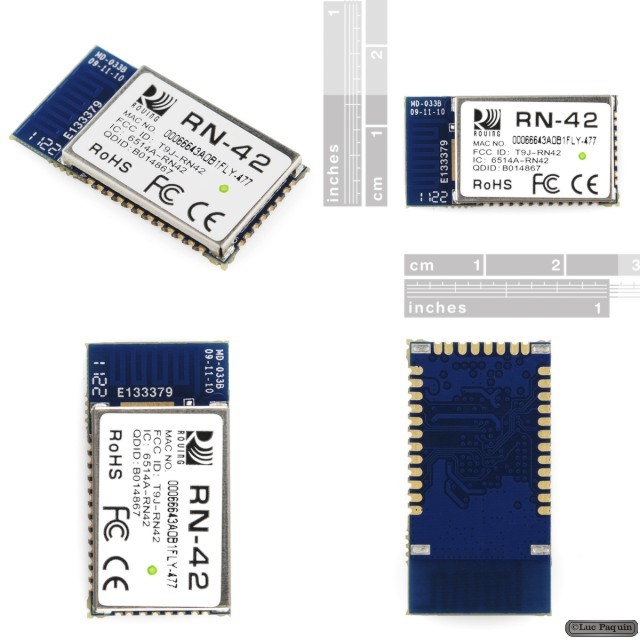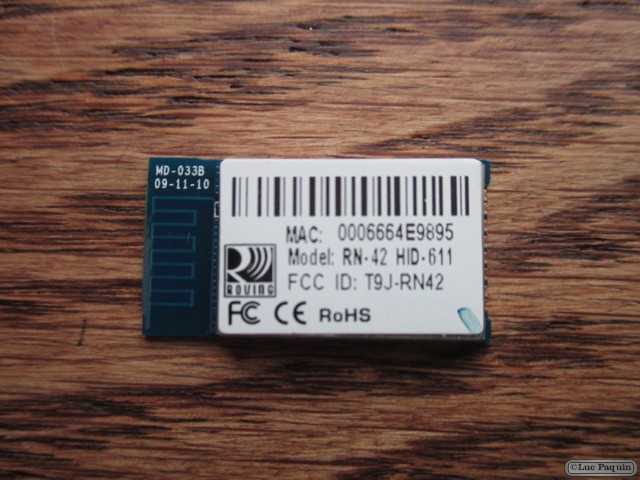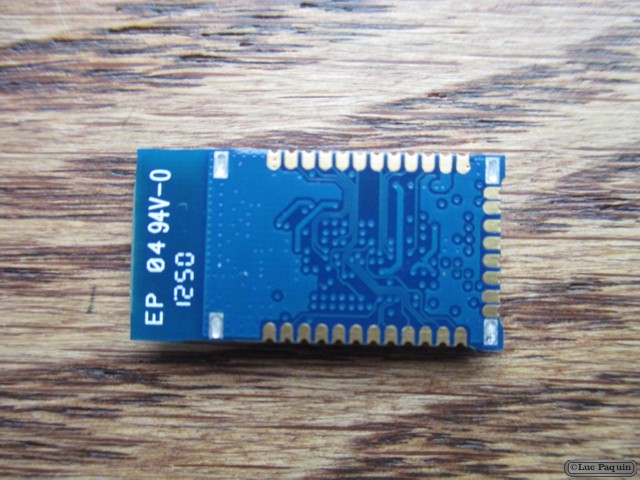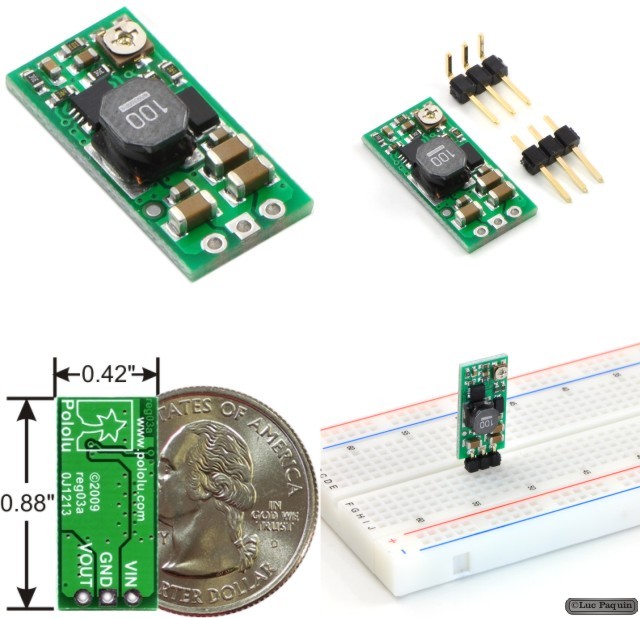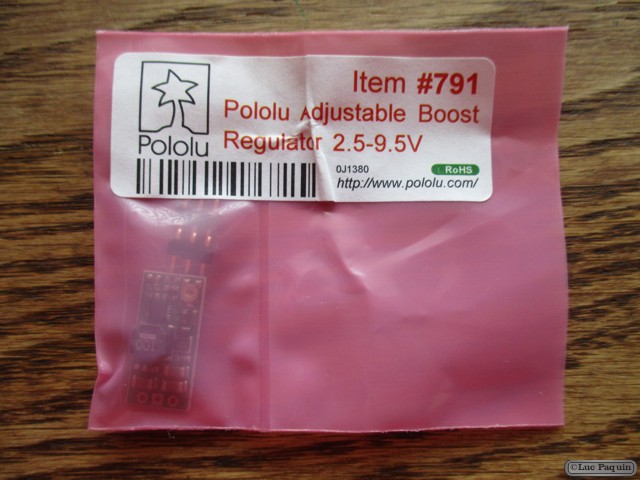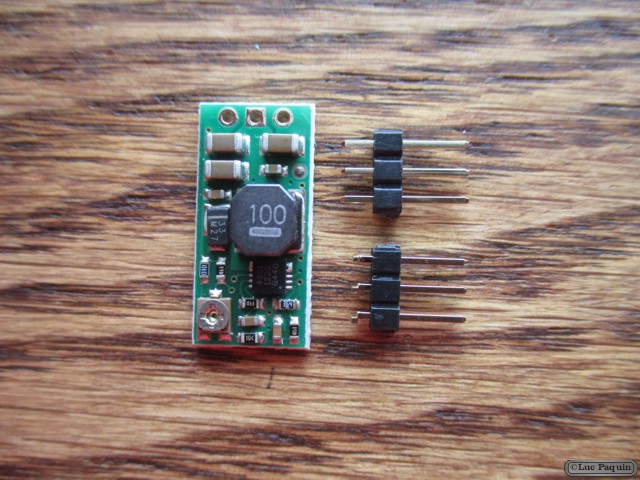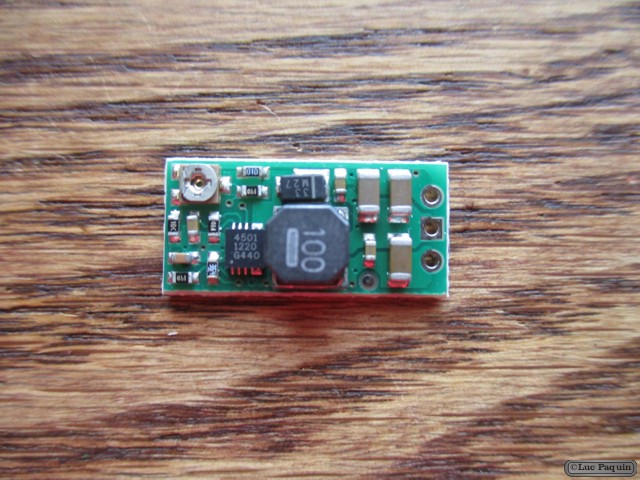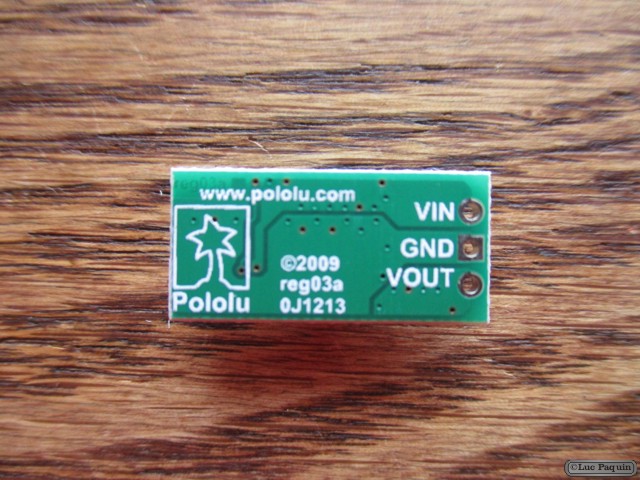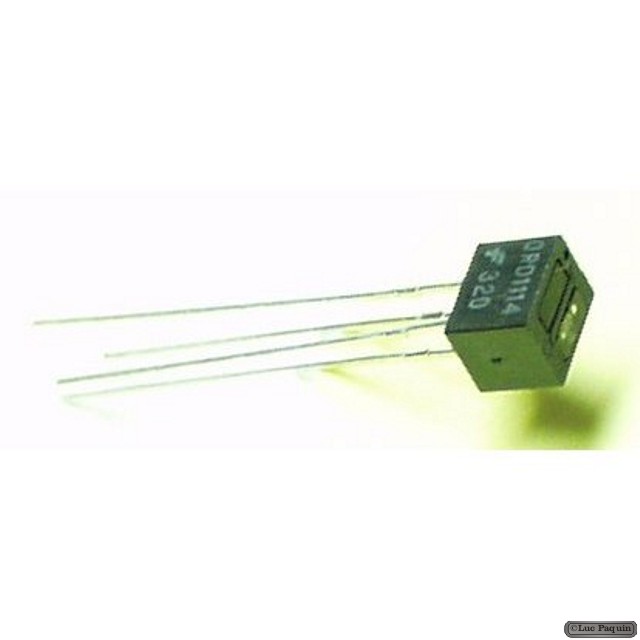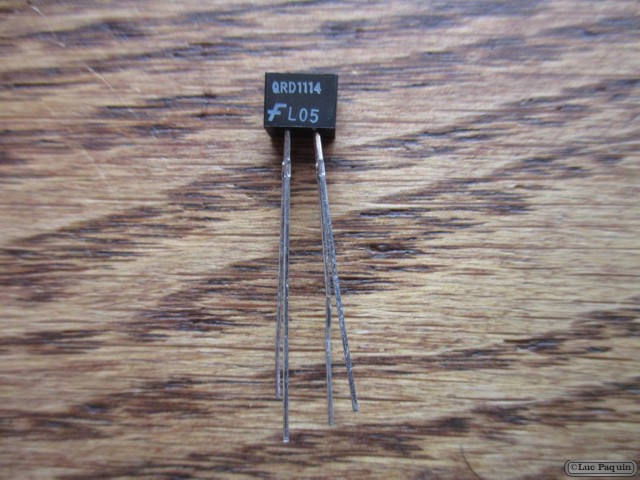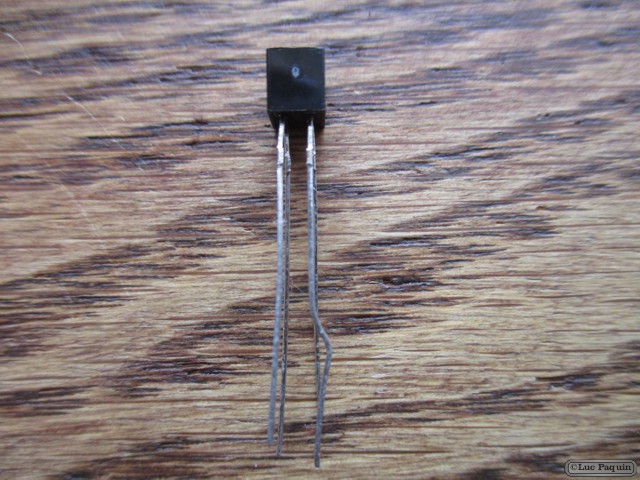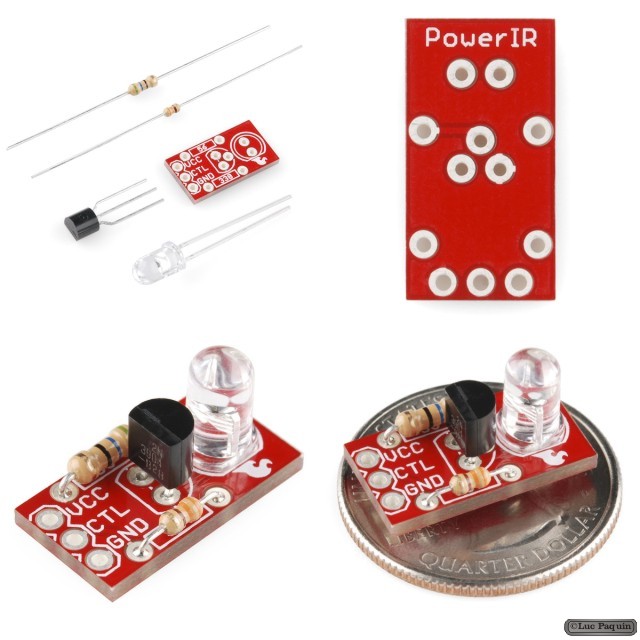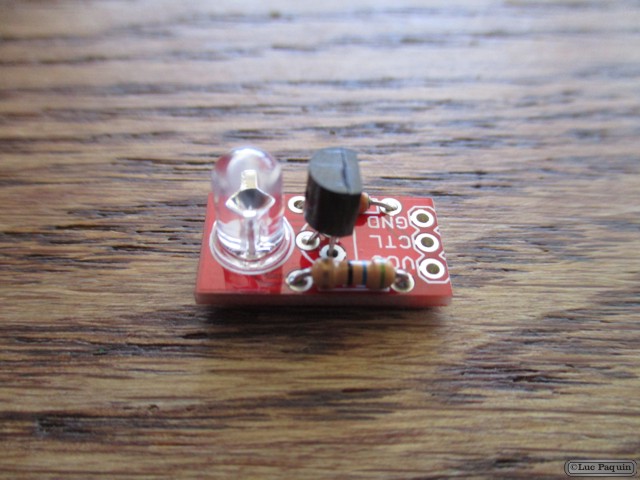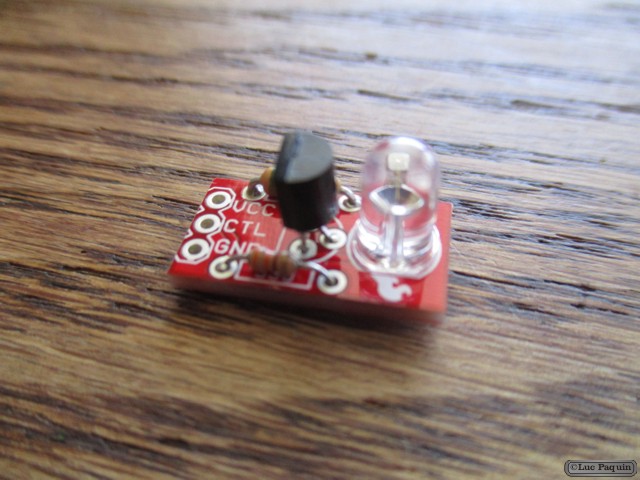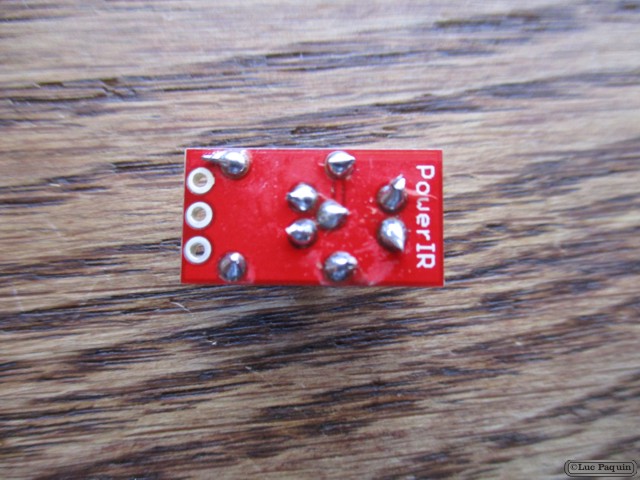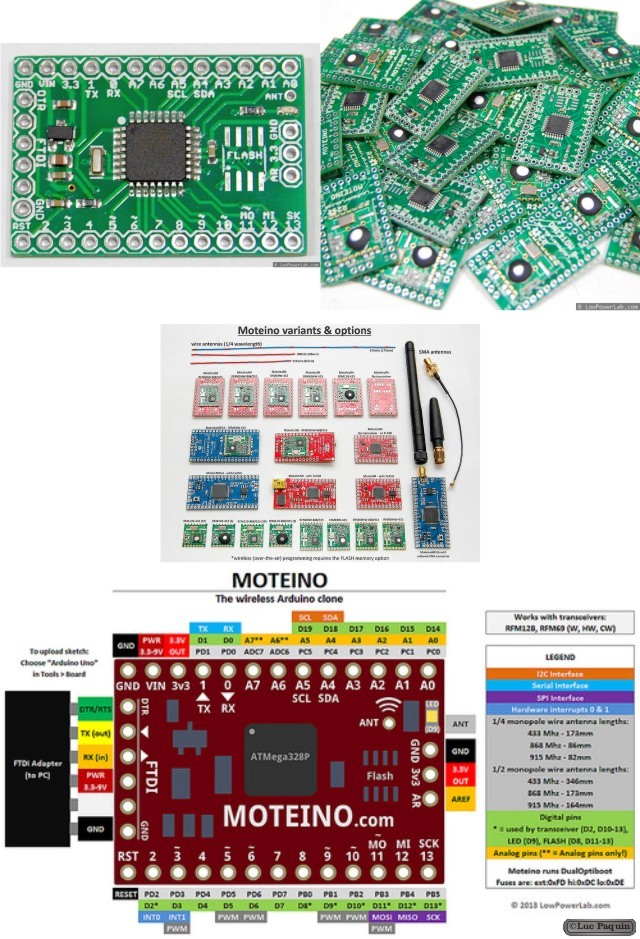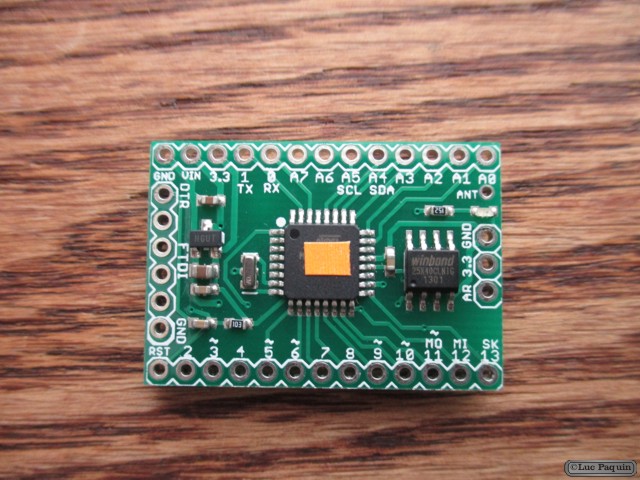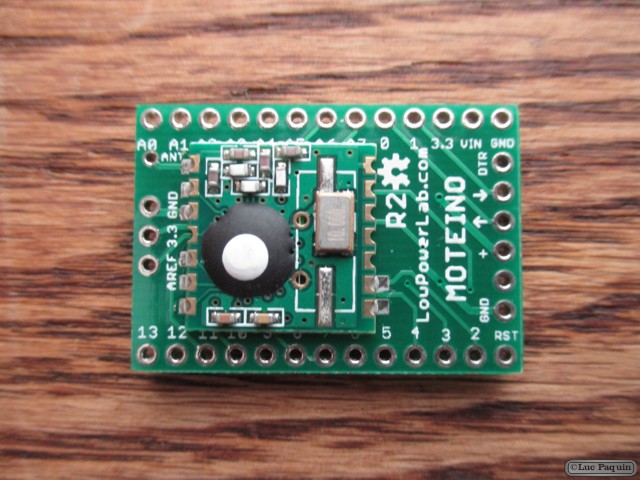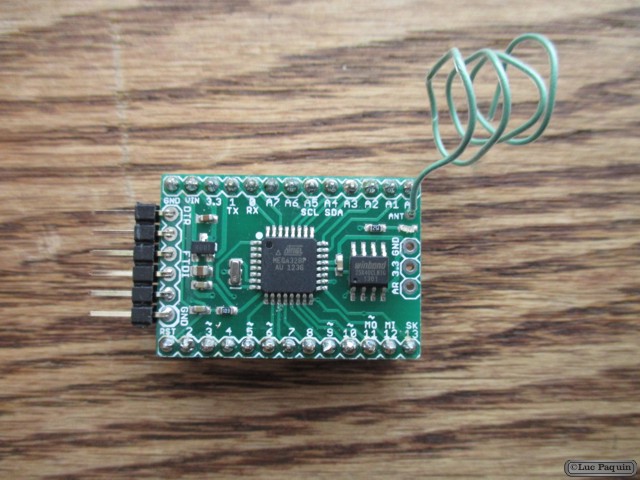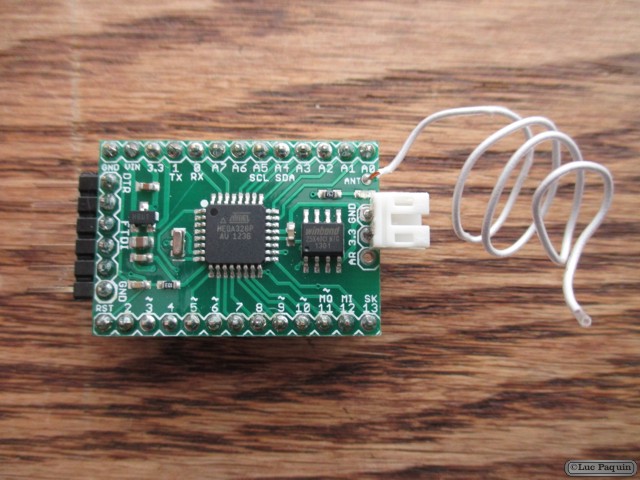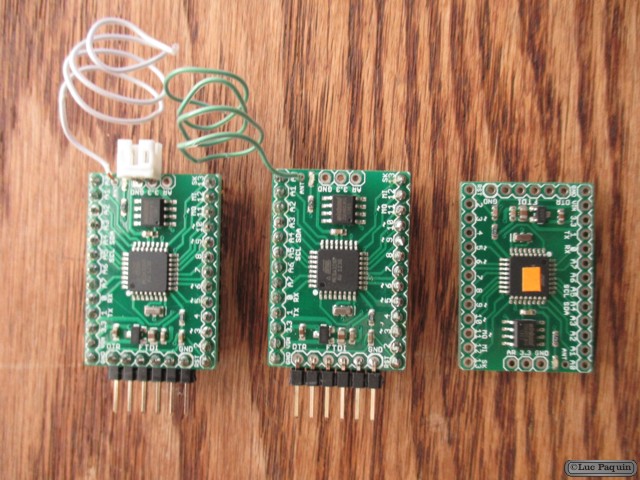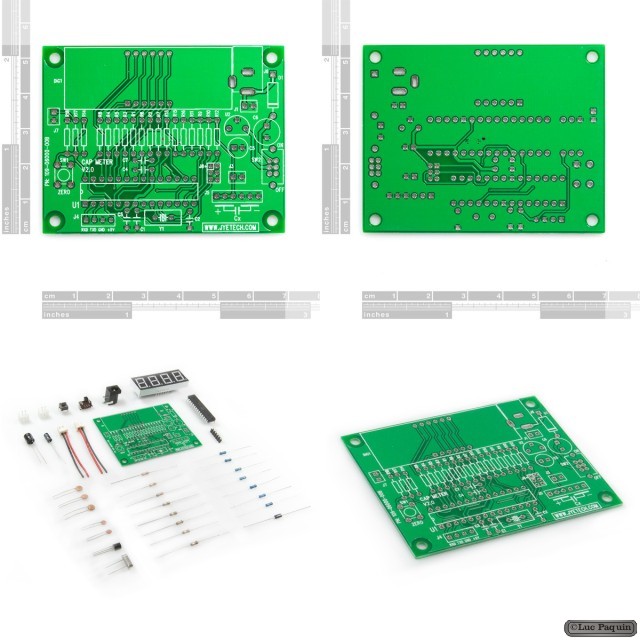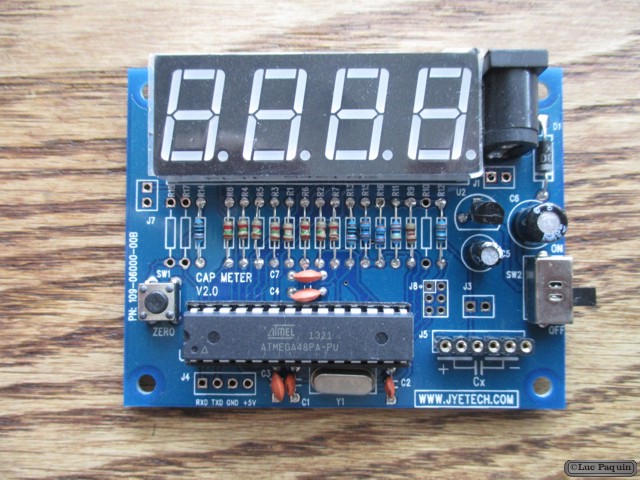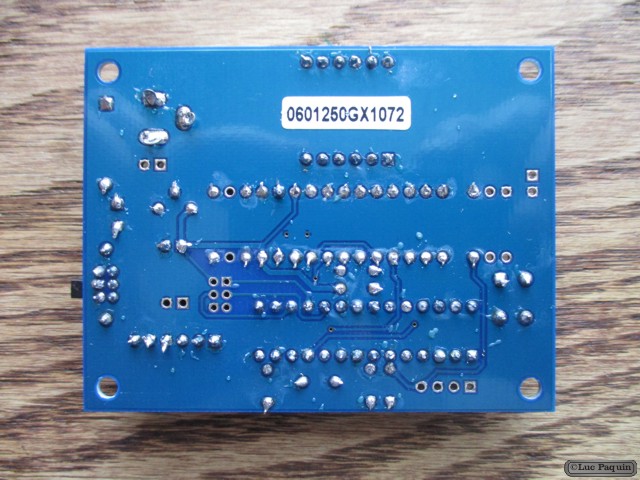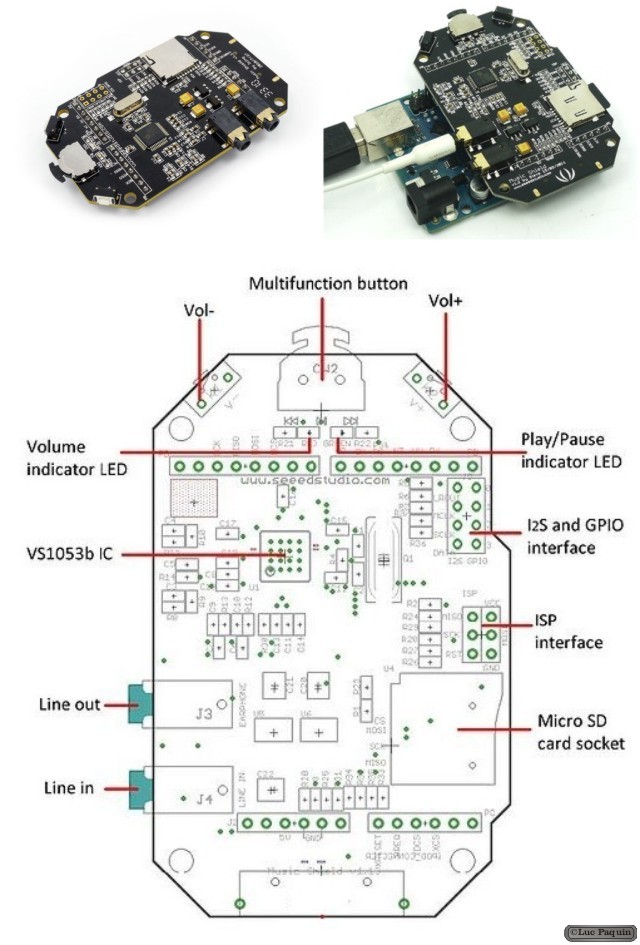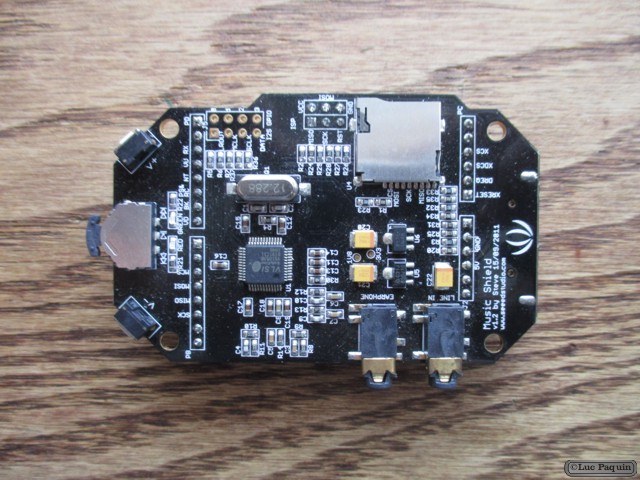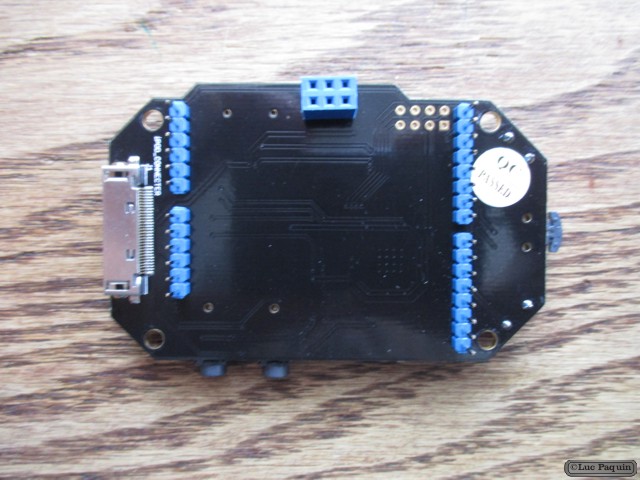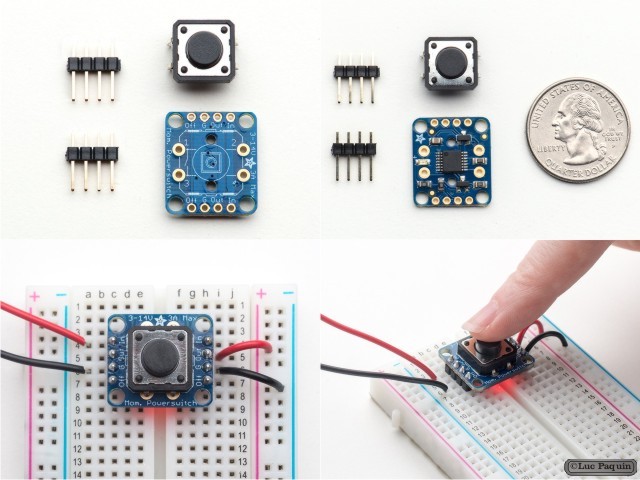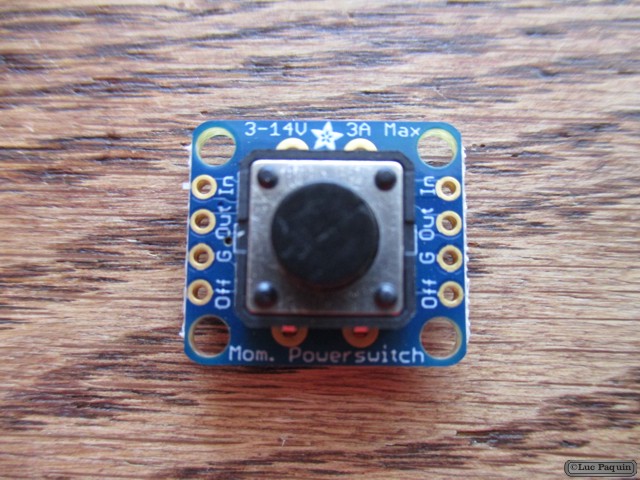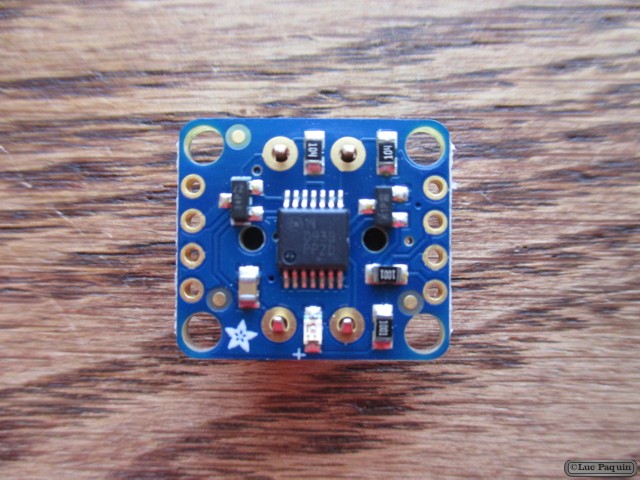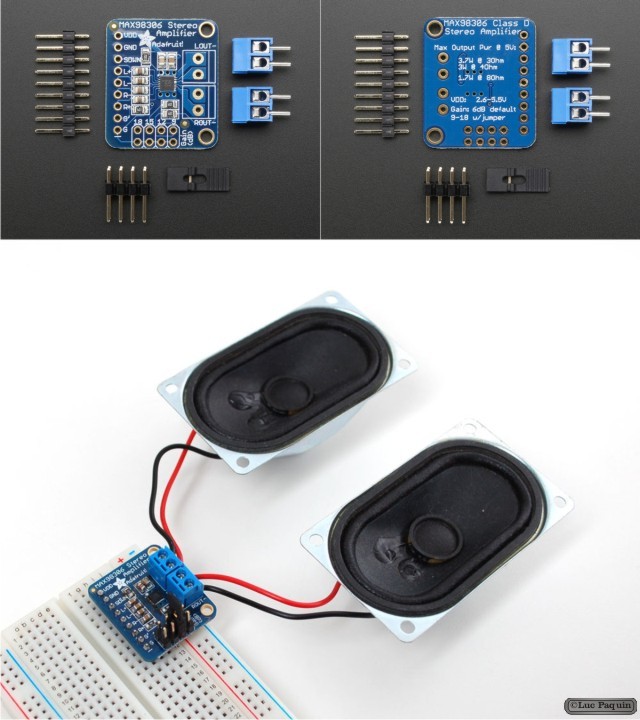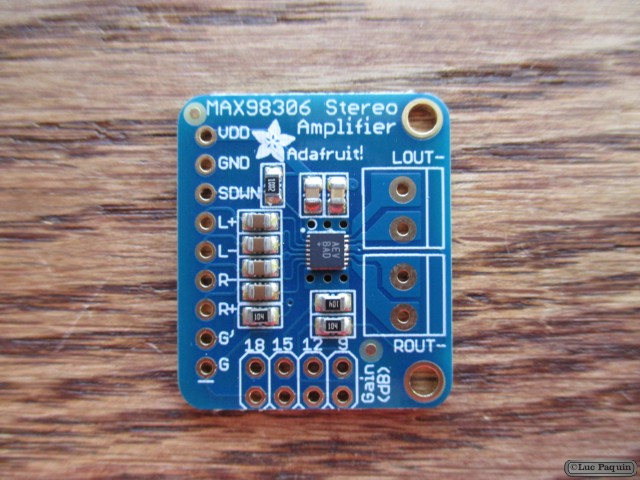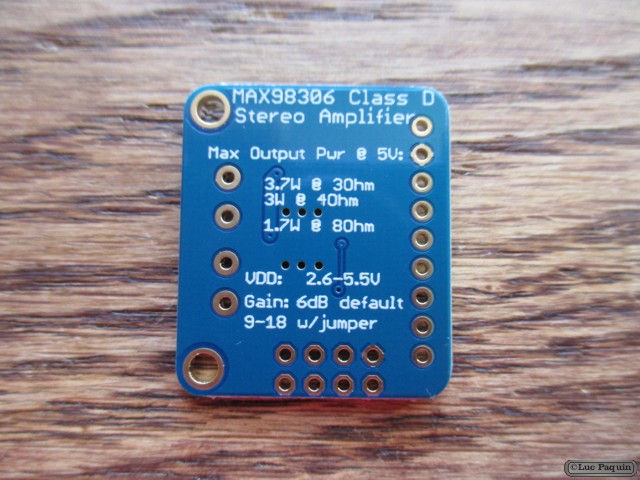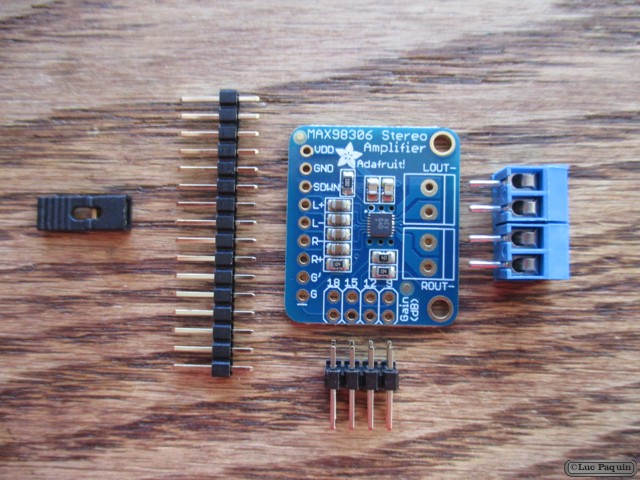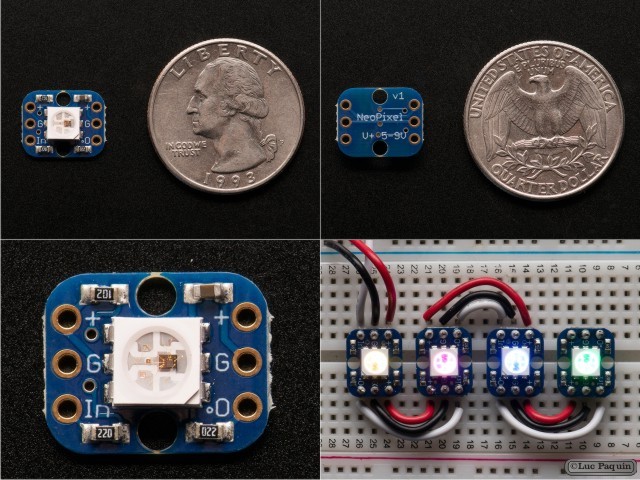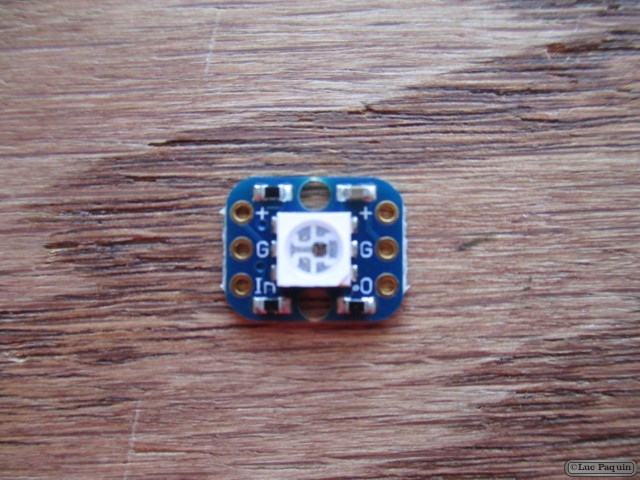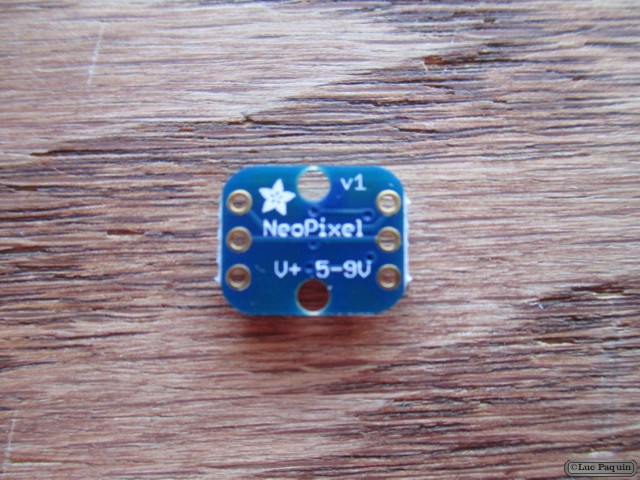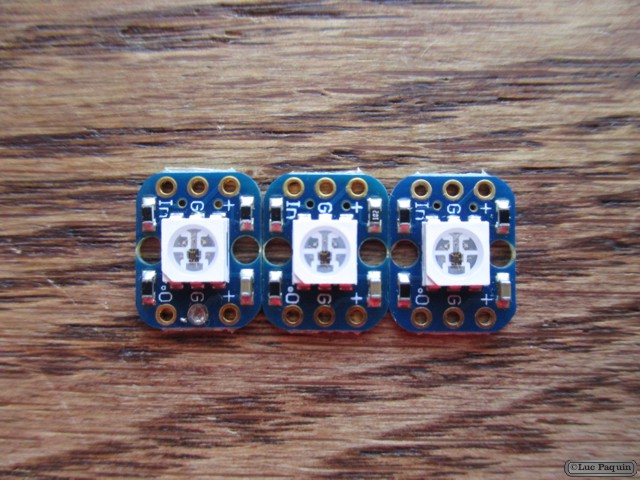Digital Electronics
Digital Electronics
SparkFun – Bluetooth SMD Module – RN-42-HID
SparkFun: WRL-10823
Description: This is the same Roving Networks Bluetooth module that you already know and love, but it comes firmware-configured for the HID protocol. HID, or “Human Interface Device”, is the communication protocol used for computer peripherals such as keyboards, mice and joysticks. This makes the RN-42-HID a simple and powerful tool for creating wireless peripheral devices which can be universally recognized and used without the installation of special drivers. The manual included in the documentation below goes into more detail about the Bluetooth HID profile.
The RN-42 is perfect for short range, battery powered applications. The RN-42 uses only 26uA in sleep mode while still being discoverable and connectable. Multiple user configurable power modes allow the user to dial in the lowest power profile for a given application.The RN-42 is even FCC and Bluetooth SIG certified making it a complete embedded Bluetooth solution.
Features:
- Fully qualified Bluetooth module
- FCC Certified
- Over air data rate of 721kbps to 2.0Mbps
- Low power sleep mode
- 3.3V operation
- Status pin
- Bluetooth Technology v2.0 compatible
- Class 2 power output
Don Luc
Pololu – Adjustable Boost Regulator 2.5-9.5V
Pololu: 791
This powerful, adjustable boost regulator can generate an output voltage as high as 9.5 V from an input voltage as low as 1.5 V, all in a compact, 0.42? x 0.88? x 0.23? package. A trimmer potentiometer lets you set the boost regulator’s output voltage to a value between 2.5 and 9.5 V.
Overview
The Pololu adjustable boost regulator is a very flexible switching regulator (also called a switched-mode power supply, SMPS, or DC-to-DC converter) that can generate voltages higher than its input voltage. We offer two adjustable ranges: approximately 2.5 V to 9.5 V and 4 V to 25 V. The output voltage can be set using the trimmer potentiometer in the upper-right corner of the board. The input voltage range is 1.5 V to 16 V (the input voltage should be kept below the output voltage). The integrated 2 A switch allows for output currents high enough to drive small motors, as in our 3pi robot, and allows large voltage gains, such as obtaining 24 V from two NiMH or NiCd cells.
Some example applications include:
- Powering 5 V or 3.3 V systems from lower-voltage batteries
- Powering 5 V subsystems (e.g. sensors) in lower-voltage (e.g. 3.3 V) systems
- Achieving consistent actuator operation when powered by fluctuating batteries
- Powering high-brightness LEDs or a large number of LEDs in series
Note: For high-volume applications, this product can be customized with fixed output voltages ranging from 2 V to 30 V.
Feature Summary
- Input voltage: 1.5 V to 16 V
- Output adjustable from 2.5 V to 9.5 V or 4 V to 25 V
- 750 kHz switching frequency
- 2 A switch (and input) limit
- Integrated over-temperature and over-current shutoff
- Typical efficiency of 80-90% when doubling voltage and with 100-500 mA output
- Small size: 10.7 x 22.4 x 5.8 mm (0.42″ x 0.88″ x 0.23″)
- Weight without header pins: 1.6 g (0.06 oz)
Don Luc
SparkFun – Optical Detector / Phototransistor – QRD1114
SparkFun – Max Power IR LED Kit
SparkFun: KIT-10732
Description: Infrared LEDs are awesome. Along with an IR receiver they can be used for remote control and even basic remote data communication. The only problem is that your Arduino won’t drive them to their full potential. The SparkFun Max Power IR LED kit solves this problem by providing you with everything you need to drive a 950nm IR LED properly. Simply solder together this easy through-hole kit and you can switch the LED using a transistor.
Once the kit is assembled, simply provide it with voltage (5V), ground, and connect the CTL pin to a digital pin on your Arduino, and you can drive this kit just like a normal LED. Although the LED won’t be visible to your naked eye, you can use a video camera, cell phone camera, or digital camera to see if the LED is working properly.
Don Luc
LowPowerLab – Moteino
LowPowerLab: Moteino R2
What is Moteino?
Moteino is a low cost low-power open-source wireless Arduino compatible development platform based on the popular ATMega328 chip used in traditional Arduinos, making it 100% compatible with the Arduino IDE (programming environment). Regular Moteino does not include an onboard USB-Serial converter (like traditional Arduinos), instead you need to use an external FTDI adapter to load sketches, the advantages being lower cost, smaller size. However there is a MoteinoUSB variant that the serial converter onboard. They are compatible with any other Arduino clones that use the popular HopeRF RFM69 transceiver, or the older RFM12B. Moteino also comes with an optional SPI flash memory chip for wireless programming, or data logging.
Soldering antenna and headers
Moteinos come without any soldered headers or antennas. Without the wire antenna the range will be only a few feet, and while this is OK for testing purposes it’s recommended that an antenna be soldered before real application use of the transmitter. The provided wire monopole antenna has to be soldered to the “ANT” pin hole (just above the FLASH chip) to achieve any usable range. Regular Moteinos will come with a 1×6 male header that you have to solder before you can power it and upload sketches through an FTDI Adapter.
Specifications for Moteino R2
- Microcontroller: ATmega328
- Transceiver: RFM69 W/HW/CW, RFM12B
- Transceivers frequencies: 434Mhz, 868Mhz (EU), 915Mhz (US, Australia, etc.)
- Input Voltage: 3.5V-16V (up to 12V recommended)
- Operating Voltage: 3.3V (regulated by MCP1703 on most recent Moteinos)
- Digital I/O Pins: 14+6 (6 PWM capable: marked with “~” symbol)
- Analog Input Pins: 8 (2 analog-only pins more than regular Arduinos)
- DC Current per I/O Pin: 20 mA
- Flash Memory: 32 KB of which 1 KB used by DualOptiboot bootloader
- SRAM: 2 KB
- EEPROM: 1 KB
- Clock Speed: 16 MHz
MISC
- Onboard LED on pin D9 instead of D13 (D9 is PWM!)
- RFM12B or RFM69 SPI-CS on D10
- FLASH SPI-CS on D8
- A6 and A7 are analog pins only, cannot be used as digital pins
Don Luc
SparkFun – Capacitance Meter DIY Kit
SparkFun: KIT-09485
Description: This kit includes everything you need to make your very own capacitance meter, able to measure caps anywhere between the range of 500uF to 1pF. Many multimeters are able to measure capacitance, but they’re rarely as precise as a dedicated capacitance meter. Not only does this product provide a great chance to hone your soldering skills, but you also come out with an accurate, fully functional, capacitance measuring tool.
Assembly is very straightforward, and all components are through-hole. You’ll get a chance to solder a wide range of components such as resistors, seven segment LEDs, a 28-pin ATmega48 microcontroller, and more!
An 8-16VDC power supply is required, but not included.
Features:
- About 1% accuracy, <2% error
- Measuring range: 1pF – 500uF
- Automatic range switch
- Zeroing available
- Real time serial output of measurement read-outs with time stamp
- Low cost and easy to build
- Power supply voltage: 8-16VDC
- Power supply current: <30mA
Don Luc
Seeed Studio – Music Shield V1.2
Seeed Studio: Music Shield V1.2
Introduction
The Music Shield is a professional audio codec.It can work with Arduino, Seeeduino, Seeeduino Mega and Arduino Mega. It is based on VS1053b IC, and can play a variety of music formats stored on MicroSD cards with Seeed the provided Arduino Library.
Note: Recording is only supported on Seeeduino Mega and Arduino Mega for now.
Features
- Arduino,Seeeduino, Arduino Mega, and Seeeduino Mega compatible
- 2 control-push buttons and 1 knob switch
- Plays music from micro SD cards Decodes: MP3, WAV, MIDI, Ogg Vorbis
I2S interface for external DAC - Headphone/Line Out for playback
- Line In for recording in OGG format
- Excellent sound quality with ±1dB Frequency Response
- FCC verification
Usage – Hardware Installation
Insert the Micro SD card and the earphone; Plug the Music Shield onto the Arduino/Seeeduino; Connect the board to PC using USB cable.
Don Luc
Adafruit – Push-button Power Switch Breakout
Adafruit: 1400
Description
The Adafruit Push-button Power Switch is a tidy little design that lets you control a DC power source using an everyday tactile button. The breakout uses a latching analog circuit that is triggered by a push of the button. Press once to turn on, then press again to turn off. The circuit uses a 3A P-FET to connect and disconnect the IN pin to the OUT pin. Works great from 3V to 14VDC and up to 3A (although the FET gets a little toasty at continuous 3A draw) yet has only 0.5uA quiescent current draw.
Using it is easy: connect the power source to Ground and IN, then the load from Ground to OUT. We include a 12mm tactile switch that works well but you can solder in your own switch as well. Press the button (or short the button pins) to alternate between on or off. A on-board red LED will light up when active so you know its working. There’s a fourth KILL pin, which you can use to turn off the load and/or keep it off even if the button is pressed. When 1 or more volts is applied it will instantly turn off the FET. This allows your project to turn itself off.
Comes with a assembled & tested bread-board friendly breakout board with four mounting holes, a 12mm tactile button, and some 0.1″ male header you can solder to the board to plug it into a breadboard.
The power switch is an elegant way to control power to your project, but there are some things to keep in mind: since there is a pass FET, this is only for 3-14V DC voltages. This is not a mechanical switch so there is no air-gap isolation. There is a ‘body diode’ in the pass FET so if the load has a voltage on it that is higher than the input voltage, current will flow back to the input. There is built-in debouncing but very bouncy switches can be annoying as they will turn on and off fast instead of latching.
Technical Details
- Dimensions: 20.51mm / 0.8″ x 17.75mm / 0.69″ x 2.66mm / 0.1″
- Height with Switch: 8.69mm / 0.34″
- Weight: 2.6g
- MC14093 Datasheet (the NAND gate used) P-Channel Pass MOSFET
Don Luc
Adafruit – Stereo 3.7W Class D Audio Amplifier – MAX98306
Adafruit: 987
Description
This incredibly small stereo amplifier is surprisingly powerful – able to deliver 2 x 3.7W channels into 3 ohm impedance speakers. Inside the miniature chip is a class D controller, able to run from 2.7V-5.5VDC. Since the amp is a class D, its incredibly efficient (over 90% efficient when driving an speaker at over a Watt) – making it perfect for portable and battery-powered projects. It has built in thermal and over-current protection but we could barely tell it got hot. This board is a welcome upgrade to basic “LM386” amps!
The inputs of the amplifier go through 1.0uF capacitors, so they are fully ‘differential’ – if you don’t have differential outputs, simply tie the R- and L- to ground. The outputs are “Bridge Tied” – that means they connect directly to the outputs, no connection to ground. The output is a 360KHz square wave PWM that is then ‘averaged out’ by the speaker coil – the high frequencies are not heard. All the above means that you can’t connect the output into another amplifier, it should drive the speakers directly.
Comes with a fully assembled and tested breakout board with 1.0uF input capacitors. We also include header to plug it into a breadboard, 3.5mm screw-terminal blocks so you can easily attach/detach your speakers, and a 2×4 header + jumper to change the amplifier gain on the fly. You will be ready to rock in 15 minutes!
- Output Power: 3.7W at 3O, 10% THD, 1.7W at 8O, 10% THD, with 5V Supply
- Passes EMI limit unfiltered with up to 12 inches (30 cm) of speaker cable
- High 83dB PSRR at 217Hz
- Spread-Spectrum Modulation and Active Emissions Limiting
- Five pin-selectable gains: 6dB, 9dB, 12dB, 15dB and 18dB. Select with a jumper or by setting the G and G’ breakout pins
- Excellent click-and-pop suppression
- Thermal and short-circuit/over-current protection
- Low current draw: 2mA quiescent and 10uA in shutdown mode
Technical Details
Dimensions (without 0.1″ header):
- Length: 28.25mm/1.11in
- Width: 24.15mm/0.95in
- Height: 3.03mm/0.12in
- Weight: 2.33g
Don Luc
Adafruit – Breadboard-Friendly RGB Smart NeoPixel
Adafruit: 1312
Description
This is the easiest way possible to add small, bright RGB pixels to your project. We took the same technology from our Flora NeoPixels and made them breadboard friendly, with two rows of 3 x 0.1″ spaced header on each side for easy soldering, chaining and breadboarding. These ultra-bright LEDs have a constant-current driver cooked right into the LED package! The pixels are chainable – so you only need 1 pin/wire to control as many LEDs as you like.
These pixels have full 24-bit color ability with PWM taken care of by the controller chip. Since the LED is so bright, you need less current/power to get the effects you want. The driver is constant current so its OK if your battery power changes or fluctuates a little.
Each pixel draws as much as 60mA (all three RGB LEDs on for full brightness white). An Arduino can drive up to 500 pixels at 30 FPS (it will run out of RAM after that). Using ribbon cable you can string these up to 6″ apart (after that, you might get power droops and data corruption)
Each order comes with 4 individually controllable pixels. In the photos above we show the pixels with headers soldered on, but the pixels do not come with any headers.
Technical Details
- Dimensions: 0.4″ x 0.5″ x 0.1″ / 10.2mm x 12.7mm x 2.5mm
- 0.5″ (12.5mm) diameter circle PCB, 0.1″ (2.5mm) total thickness
- 800 KHz speed protocol
- Chainable design
- 5-9VDC power (can run at 3.5V but color will be dimmed), constant current 18.5mA per LED (~55mA max total per pixel)
Don Luc
